The Arctic is one of the most rapidly changing regions in the world. Diminishing sea ice, thawing permafrost, and melting glaciers are all direct effects of rising global temperatures – driven by human-made emissions. Learn more about how satellites flying 800 km (500 mi) above our heads can help us monitor and understand the changes occurring in this remote region.
The Arctic is a polar region located at the northernmost part of Earth. The Arctic consists of the Arctic Ocean, adjacent seas, and parts of Alaska (United States), Canada, Finland, Greenland (Denmark), Iceland, Norway, Russia, and Sweden. Land within the Arctic region has seasonally varying snow and ice cover, with predominantly treeless permafrost (permanently frozen underground ice) containing tundra. Arctic seas contain seasonal sea ice in many places.
The Arctic region is a unique area among Earth’s ecosystems. The cultures in the region and the Arctic indigenous peoples have adapted to its cold and extreme conditions. Life in the Arctic includes zooplankton and phytoplankton, fish and marine mammals, birds, land animals, plants, and human societies. Arctic land is bordered by the subarctic.
There are a number of definitions of what area is contained within the Arctic. The area can be defined as north of the Arctic Circle (66° 33’N), the approximate southern limit of the midnight sun and the polar night. Another definition of the Arctic, which is popular with ecologists, is the region in the Northern Hemisphere where the average temperature for the warmest month (July) is below 10 °C (50 °F); the northernmost tree line roughly follows the isotherm at the boundary of this region.
The Arctic is characterized by cold winters and cool summers. Its precipitation mostly comes in the form of snow and is low, with most of the area receiving less than 50 cm (20 in). High winds often stir up snow, creating the illusion of continuous snowfall. Average winter temperatures can go as low as −40 °C (−40 °F), and the coldest recorded temperature is approximately −68 °C (−90 °F). Coastal Arctic climates are moderated by oceanic influences, having generally warmer temperatures and heavier snowfalls than the colder and drier interior areas. The Arctic is affected by current global warming, leading to Arctic sea ice shrinkage, diminished ice in the Greenland ice sheet, and Arctic methane release as the permafrost thaws. The melting of Greenland’s ice sheet is linked to polar amplification.
Due to the poleward migration of the planet’s isotherms (about 56 km (35 mi) per decade during the past 30 years as a consequence of global warming), the Arctic region (as defined by tree line and temperature) is currently shrinking. Perhaps the most alarming result of this is Arctic sea ice shrinkage. There is a large variance in predictions of Arctic sea ice loss, with models showing near-complete to complete loss in September from 2035 to some time around 2067.

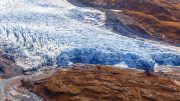
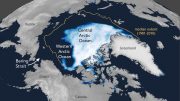

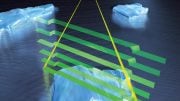

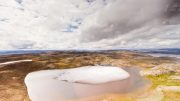
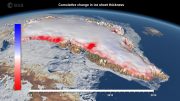
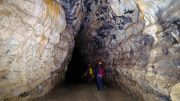
Did y’all ever wonder what happened to the Arctic 5000+ years ago when the earth warmed to a postglacial high? My north-woods home was a prairie then, & our lakes were lower than today.
Read facebook.com/ron.mccune.3 to see how global warming all started in the 1960’s from melting permafrost water draining into the Arctic from the Russian area of the Earth. Why was this only happening in the Russian sector of the world is discussed along with ways to stop global warming. But all of you better read it because in about 20 years all hell is going to break loose as the environment will collapse from the power of the Sun’s rays which will have the ability to bake all life to death because then there will be no more clouds to shield the Earth or rain from clouds to provide water for all life! You all got a very ugly life coming your way in about 15-20 years. I tell you how to avert it. Either do as I say or kiss all your asses goodbye!